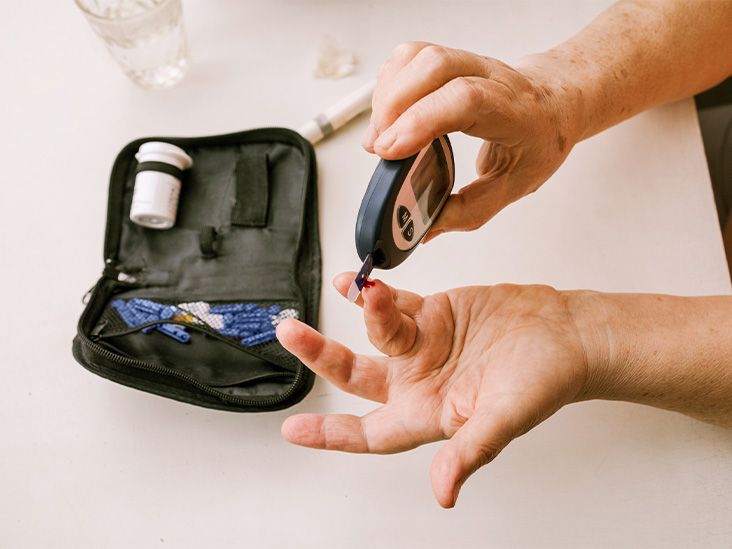Doctors may use intravenous (IV) or oral estrogen to manage hormones and treat atypical uterine bleeding. People may need to continue taking oral contraceptives after the initial bleeding is under control.
Treatment plans for atypical uterine bleeding will depend on individual factors, including the extent of the bleeding, the underlying cause, and whether a person wants to have children in the future.
Doctors may suggest hormone medications as a first treatment type for acute bleeding. They may also recommend them for people who are in perimenopause or who want contraception.

Doctors
- IV conjugated equine estrogen
- combined estrogen-progestin oral contraceptive pills
Hormonal treatments containing estrogen may help with atypical uterine bleeding in the following ways:
- suppressing endometrial development, the process by which the uterine lining thickens and sheds throughout the menstrual cycle
- reestablishing predictable bleeding patterns
- decreasing menstrual flow
According to the American College of Obstetricians and Gynecologists (ACOG), doctors may use the following doses and schedules to treat atypical uterine bleeding:
- IV conjugated equine estrogen: 25 milligrams every 4 to 6 hours for 24 hours.
- Combined oral contraceptives: 35 micrograms of estrogen three times per day for 7 days.
However, the ACOG notes that other formulations, dosages, and schedules of combined oral contraceptives may also be effective at managing acute uterine bleeding.
People can talk with their doctor about a treatment regimen that may be most suitable for them.
Treatment timelines may depend on the form of estrogen a doctor uses.
According to a 2019 review, acute bleeding should lessen within 8 hours of IV treatment initiation. Doctors may use this treatment in severe cases. If bleeding does not lessen, they may need to consider a different treatment approach.
In people who are in a more stable condition and who are suitable for combined oral contraceptives, bleeding may take a couple of days to stop.
The ACOG summarizes older research that suggests bleeding stopped within an average of 3 days in people who took combined oral contraceptives three times per day for 1 week.
However, treatment time may vary depending on individual factors, such as the underlying cause of atypical uterine bleeding.
The risks of using estrogen for atypical uterine bleeding may depend on the treatment type.
For example, a 2021 report suggests that hormone therapy with conjugated equine estrogen may cause the following side effects:
People having IV estrogen or high doses of estrogen may experience nausea. Doctors may consider giving someone who has this side effect an antiemetic drug. These drugs ease nausea or vomiting.
Combined oral contraceptives
- cramps
- nausea
- headaches
- tender breasts
- decreased libido
- breakthrough bleeding
- increased vaginal discharge
Contraindications
Research suggests that some people may not be able to take each type of estrogen treatment.
Conjugated equine estrogen may be unsuitable for people with:
- breast cancer
- venous thrombosis
- liver disease or dysfunction
Combined oral contraceptives may be unsuitable for people who:
- smoke
- have a history of pulmonary embolism or deep vein thrombosis
- have any of the following conditions:
- hypertension
- blood clot disorders
- cerebrovascular disease
- heart disease
- migraine with aura
- severe liver disease
- breast cancer
If someone with uterine bleeding is not suitable for estrogen treatment, a doctor may suggest the following alternative treatments:
- Nonhormonal medications: This may include nonsteroidal anti-inflammatory drugs (NSAIDs) and tranexamic acid.
- Progestogen: This is another type of hormone treatment that may suit people who cannot have estrogen.
- Gonadotropin-releasing hormone antagonists: This type of medication suppresses ovarian hormone production.
- Danazol (Danocrine): This medication causes endometrial atrophy (reduced thickness of the endometrium) to reduce menstrual blood levels.
- Surgical procedures: In some cases, a doctor may suggest surgical procedures, such as a hysterectomy or endometrial ablation.
Before a hysterectomy or ablation, a doctor may be able to attempt a dilation and curettage to help with bleeding. This procedure, which involves removing tissue from the uterus,
Atypical uterine bleeding affects
People may need to speak with a doctor if the timing or amount of bleeding they experience is different than their usual menstruation. A doctor may check for pregnancy before anything else.
Atypical bleeding may:
A doctor can diagnose the underlying cause of the atypical bleeding and discuss a person’s potential treatment options.
Can doctors use estrogen therapy for all cases of atypical uterine bleeding?
Estrogen treatment may be unsuitable for people with heavy atypical bleeding or those who want to become pregnant. Doctors may also avoid prescribing estrogen treatments to people with known contraindications, such as heart disease, breast cancer, and more.
What happens after doctors control acute bleeding with estrogen therapy?
After doctors control initial bleeding, some people may continue with hormonal contraceptives. Others may stop treatment to see if the bleeding reoccurs.
How long does estrogen therapy last when treating uterine bleeding?
The duration of estrogen treatment for uterine bleeding may depend on the extent and underlying cause of bleeding, the type of treatment, and a person’s fertility goals.
For acute bleeding, IV conjugated equine estrogen may continue for 24 hours. Treatment with the oral combined contraceptive pill may involve taking a pill three times daily for 7 days, followed by one pill daily.
Atypical uterine bleeding can occur at any time during a person’s life. However, it may be more common during perimenopause or around the time of a person’s first period.
Doctors may suggest treatments involving estrogen, such as intravenous conjugated equine estrogen or the combined contraceptive pill, to treat atypical uterine bleeding.
If hormone treatments do not work, a doctor may suggest nonhormonal medications. In some cases, surgery may be necessary.


